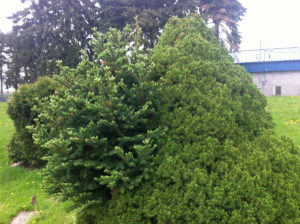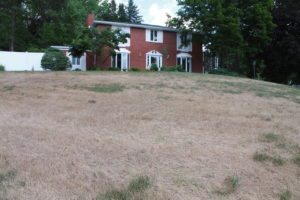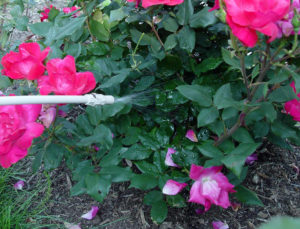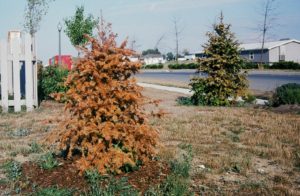The Mystery of Morphing Plants
August 25th, 2020
One question I get a lot is about plants that seem to be turning into something else (i.e. some other version of plant, not a lizard or monster or something).
A common one is the popular landscape evergreen dwarf Alberta spruce, that dense little pyramidal upright that flanks so many front doors.
Often times, dwarf Alberta spruce will start growing a branch that looks like it came from a much bigger evergreen – one with longer needles, larger branches, and a much faster growth rate.
Given a few years to grow, the oddball branch can dominate the bush and almost look like it’s a new tree growing out of the one you planted.
People mention all kinds of possible explanations. In the 1970s, it would’ve been blamed on TMI. But in reality, this shape-shifting is a case of “reversion.”
Reversion is an oddity of the plant world that involves genetic plant mutations that are sort of “undoing” themselves and going back to the growth habit of an ancestor.
In the landscape, it typically happens to plants that came to us from breeders who capitalized on a chance mutation of a plant.
Dwarf Alberta spruce, for example, is a type of native white spruce that was developed decades ago from a plant that put out unusually small and narrow needles and had a very slow, tight, conical growth habit.
Mutated branches like this – called “witch’s brooms on conifers – can be removed from parent plants and grafted onto the roots or wood of other plants of the species to create a new plant with the mutated traits. Or a mutated cutting can be stuck in a potting medium and rooted to produce a new baby plant of its own.
The gardening public sometimes prefers the mutated traits to the original ones. That’s why dwarf Alberta spruce, with its compact, slow-growing habit, became a huge hit despite being highly prone to attack from spider mites.












